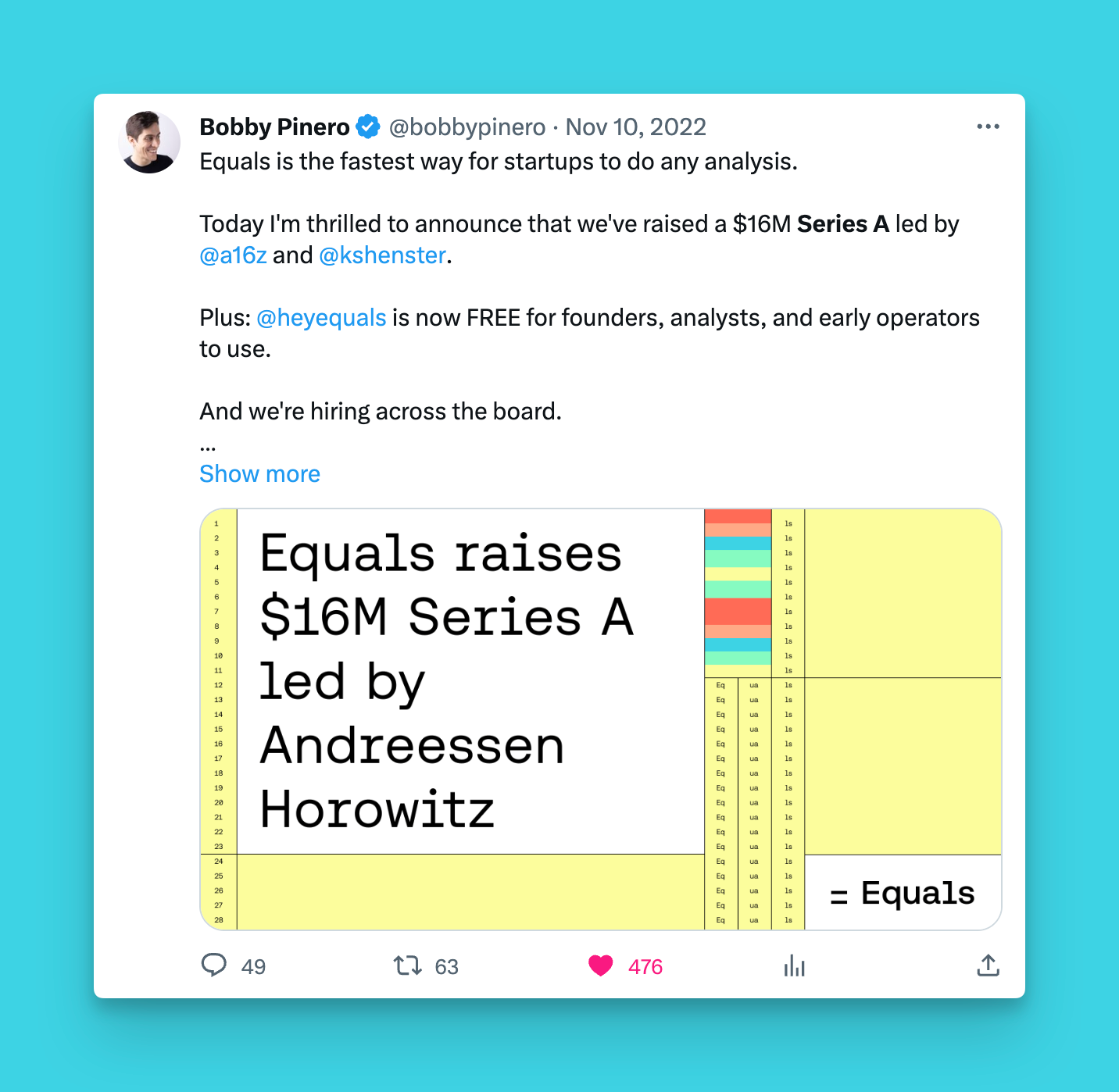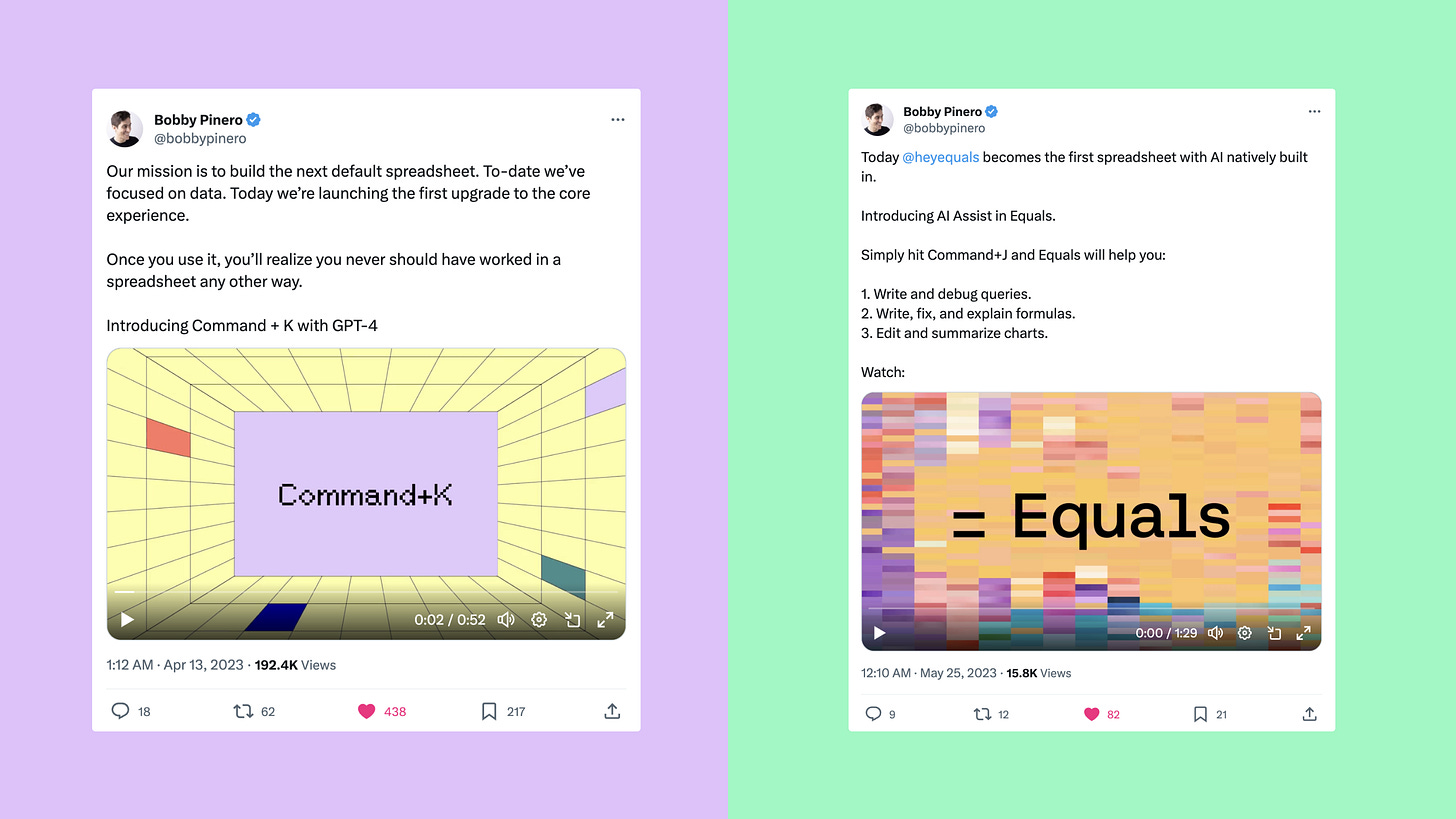The fallacy of freemium in SaaS
The following is a true story. It is the story of when we made Equals free. A decision that broke our business (for a minute).
Not all friction is bad
Deciding to make Equals free was one of the riskiest decisions I’ve made as CEO of Equals. I went into it with a ton of conviction. And I turned out to be wrong.
It all started when we launched Equals in April 2022. We made a big splash.
Because Equals is a complex product to build and expectations for how a spreadsheet should look and feel are insanely high, we gated access to the product. We wanted to onboard every single customer manually. We wanted to understand their use case. We wanted to establish a close relationship so they’d give us the benefit of the doubt when they inevitably ran into issues.
This strategy worked really well. In fact, it worked so well that revenue took off.
In just five months, we were able to raise a $16M Series A from one of the best investors in the world – a16z. And then I broke everything.
Freemium looked great (on paper)
Our pricing at the time was obscure – so obscure we were getting comments like these (there were more, but they've since been deleted).
Coming from Intercom – where we constantly struggled with a reputation of being unfairly and obscurely priced – we were particularly sensitive to this critique. The last thing we wanted was to have this be the perception of Equals, too. Pricing is hard, after all.
At the same time, we were watching the darlings of SaaS – companies like Notion, Figma, and Airtable – envying their massive adoption. Naturally, we thought it must be because they have a free tier and consumer-like pricing. It was obvious. We should do the same. At least, that’s what we thought.
Opening the floodgates
Here’s the memo I sent to investors and employees spelling out the rationale behind the decision to introduce a free plan and open the floodgates, so to speak.
Make special note of my conviction. It didn’t help that almost everyone agreed with me – "I must be right!" I thought. 😬
So, when we announced our Series A, we opened up Equals to the world:
✅ No more onboarding call required
✅ Prices slashed for current and future customers
✅ A generous new free plan
We sat back, ready to watch the masses sign up.
And sign up, they did. For a little while.
The needle moved until it didn’t
Almost immediately, we 4x'd the number of companies using Equals on a daily and weekly basis. But then, over the course of the next six months, the business really stalled:
⛔ We struggled to retain customers
⛔ We struggled to turn free workspaces into paid subscriptions
Why? Our funnel was long. To hit a paywall, you had to:
🚧 Create a workspace
🚧🚧🚧 Connect to a datasource (a big hurdle)
🚧Invite teammates
🚧Run a query before seeing a paywall
All the while, we continued shipping innovative products, making big splashes with each release.
But we were unable to move the needle back in the right direction meaningfully. So, after six months, we decided the risk was too significant. We had plenty of runway, but we knew we had to get back to building a growing business. And perhaps there was something unintentionally incorrect about free – for us.
From free to free* trial
In June this year, we launched 25+ new datasources. And we killed our free plan at the same time. In order to use Equals, you could start a free trial, but you had to put a credit card down.
Now, I know what you’re thinking: why on earth would we introduce even more friction? Well, as it turns out, not all friction is bad. Within a couple of months, we were back on an exciting growth trajectory with the most engaged user base we’d ever seen.
This leads me to one of the most interesting learnings I’ve had while working on Equals – introducing more friction in order to use the product has proven to work better for our business. This was something Ben and I had seen first-hand during our respective tenures at Intercom as well.
Counterintuitive ≠ wrong
We all hear it. All the time. “Make onboarding simpler! Get people into your product as fast as possible! Make it free! You'll figure out how to monetize later!”. It makes sense. And it obviously works for some. It just didn’t work for us.
We believe that making people invest time, commit to a trial, and put skin in the game will help you build a more engaged user base. This friction weeds out the people who aren’t serious and creates a sense of urgency. It also forces you to focus on the customers and users that really matter.
A work in progress
Will Equals ever be free again? Maybe. It’s very possible that down the line, we’ll revisit a freemium path to using Equals. Perhaps we’ll just always be in pursuit of that elusively perfect pricing model.
Time will tell. For now, we’re 100% focused on continuing to create the spreadsheet for modern data analysis.









